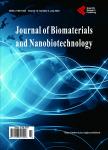Propyl-Sulfonic Acid Functionalized Nanoparticles as Catalyst for Pretreatment of Corn Stover
丙基磺酸功能化纳米粒子作为催化剂玉米秸秆预处理作者机构:Department of Biological and Agricultural EngineeringKansas State UniversityManhattanUSA Department of Chemical EngineeringKansas State UniversityManhattanUSA Department of ChemistryKansas State UniversityManhattanUSA
出 版 物:《Journal of Biomaterials and Nanobiotechnology》 (生物材料与纳米技术(英文))
年 卷 期:2014年第5卷第1期
页 面:8-16页
基 金:funded by NSF EPSCoR Kansas Center for Solar Energy Research and facilitated by Kansas State University supported by National Science Foundation Grant:From Crops to Commuting:Integrating the Social,Technological,and Agricultural Aspects of Renewable and Sustainable Biorefining(I-STAR),NSF Award No.:DGE-0903701
主 题:Acid Functionalized Nanoparticles Catalyst Biomass Pretreatment Hydrolysis
摘 要:Propyl-sulfonic (PS) acid-functionalized nanoparticles were synthesized, characterized and evaluated as catalysts for pretreatment of corn stover. Silica coated nanoparticles were functionalized with 0.5% mercaptopropyltrimethoxysilane (MPTMS) at neutral pH in a mixture of water and ethanol. Sulfur contents of the acid functionalized nanoparticles, measured in a CHNS analyzer, varied from 6%-10%, and the acid load ranged from 0.040 to 0.066 mmol H+/g. A Box-Behnken design was employed to calculate the minimum number experiments required to obtain an estimate of the surface response for temperature, catalyst load, and %S content of the catalyst. Pretreatment of corn stover was carried out at three temperature levels 160, 180, and 200°C for 1 h. Three levels of catalyst load were used 0.1, 0.2, and 0.3 g of catalyst per gram of biomass. Hydro-thermolysis controls were carried at each temperature level. The catalyst load did not have an effect on the glucose yield at 160°C, and the average glucose yield obtained at this temperature was 59.0%. The glucose yield was linearly correlated to the catalyst load during pretreatment at 180°C, and a maximum glucose yield of 90% was reached when using 0.2 g of PS nanoparticles that had a total sulfur content of 6.1%. Complete hydrolysis of glucose was reached at 200°C but the average xylose yield was 4.6%, and about 20.2% of the combined glucose and xylose were lost as hydroxymethylfurfural and furfural. Results showed that acid-functionalized nanoparticles can be potential catalysts for the pretreatment of biomass for its later conversion to ethanol.



